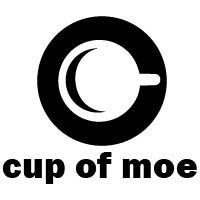We may earn money or products from the companies mentioned in this post.
Picking the best Coen Brothers movie can be a daunting task considering their profusion of films. 2013’s Academy Award nominated “Inside Llewyn Davis” swooped into theatres with a subdued yet familiar style. In typical Coen fashion, “Inside Llewyn Davis” features quirky characters, tragi-comedy, and masterful music. Acting, as per tradition, is phenomenal and not surprisingly the Brothers bring a few staples to the set. Though this might not be their best project, it’s certainly not their worst, and the fresh ideas and execution makes this one of last year’s best flicks.
“Inside Llewyn Davis” follows the titular character, Llewyn Davis (Oscar Issac). A New York folk singer, Davis is faced with failing album sales. He regularly couch surfs, as evidenced by a brief stay with elderly friends the Gorfeins’ (Ethan Phillips, Robin Bartlett). From the opening scene, it’s fairly obvious that if something can go awry for Davis, it will. While lugging his bags out of the apartment, the Gorfeins’ cat dashes for freedom, and naturally the door locks them both out. The cat plays a small though poignant role, disappearing and reappearing sporadically. Davis, cat in tow, arrives on the doorstep of his buddies Jim (Justin Timberlake) and Jean (Carey Mulligan). Jean relays the unwelcome news that she’s pregnant, possibly with Llewyn’s child.
As the narrative progresses, Davis pursues multiple leads attempting to boost his music career, and along the way reveals his tragic personal life. His former partner threw himself from the Brooklyn Bridge, his music isn’t selling, and relationships, familial and otherwise, seem strained. Llewyn embodies the folk songs he delivers, living the struggles he croons over his acoustic strumming.
Protagonist Llewyn Davis offers a conflicted character, and as such audiences entertain mixed feelings. Davis’ career stumbles along, and he’s outwardly afflicted by the suicide of his former partner. He’s bitter and angst-riddled, but understandably so. At the same time, Llewyn persistently rejects and passes up opportunities to redeem himself or better his situation. Occupation choices particularly highlight Davis’ short-sighted worldview: he accepts $200 cash immediately rather than taking royalties on a short, goofy song recorded with pal Jim and singer Al Cody (Adam Driver). Later he seeks out Bud Grossman (F. Murray Abraham) hoping for a chance at getting some gigs and promotion, and though he’s offered a small-time role, Davis opts out.
The complexity of Llewyn Davis presents a refreshingly unique character. You pity Davis while admonishing several of his actions. Over the course of the film, there’s a cyclical feel: once Davis appears to have struck rock bottom, he’s pummeled further down, whether by fault of his own or circumstances beyond control. The finale mimics the intro; the script even reads almost word for word, but this time when Davis is beaten (physically), he takes up for himself. There’s the sense that Llewyn has matured during the movie, and he shakes off the encounter rather than moping.
Stylistically “Inside Llewyn Davis” parallels the plot: drab. There’s a perpetually overcast sky, and sets comprised largely of browns, blacks, greys and whites. This is the Yang to Kubrick’s Overlook Hotel. This reflects Llewyn’s sentiment as the poor guy receives quite a beating, both physically and otherwise. The persistent tribulations feel appropriate for conveying the folk movement, which sees direct and obtuse references. There’s obviously Davis’ record, which harkens back to Dave Van Ronk’s album of almost the same title. Fictional character Bud Grossman is a throwback to Albert Grossman. And of course what folk piece would be complete without Bob Dylan, portrayed briefly by Benjamin Pike.
Acting is phenomenal with a number of new faces. Oscar Isaac’s IMDB page may be fairly sparse, but don’t expect it to remain so much longer. Unlike other Coen Brothers films, “Inside Llewyn Davis” centers almost entirely on the main character. That being said, Carey Mulligan delivers an inspired performance, and conveys her resentment at possibly bearing Davis’ child. She even manages to incite some laughter when discussing fairly heavy subjects, testament to both script writing and Mulligan’s acting prowess. Justin Timberlake pleases in his scenes, though he gets scant screentime. Longtime Coen collaborator John Goodman, an always-appreciated face, nails snarky Jazz musician Roland Turner, accompanied by beat poet Johnny Five (Garrett Hedlund). Ironically, though both Hedlund and Goodman are fantastic, their scenes feel forced. Sure, their appearances tie into the overall narrative, but the segment emits an unfinished, underdeveloped quality.
Coen Brothers fans will certainly enjoy “Inside Llewyn Davis,” as well as folk fanatics, but be forewarned that the film departs from earlier Coen material. There’s still dry, quirky humor and deep characters, but “Inside Llewyn Davis” is much darker and more brooding than anything in their catalog. Humor being inherently difficult, the film contains genuinely comical moments while providing a thought-provoking narrative revolving around failure. It’s actually pleasing to see a story which focuses on disappointment rather than success. Overall, though bleak, “Inside Llewyn Davis” is well worth 105 minutes of your day, with solid acting, a compelling tale, and renewed material from seasoned directors.
This post may contain affiliate links. We are a participant in affiliate programs such as the Amazon Services LLC Associates Program, an affiliate advertising program designed to provide a means for us to earn fees by linking to Amazon.com and affiliated sites. However, all products are thoroughly tested and reviews are honest and unbiased.

